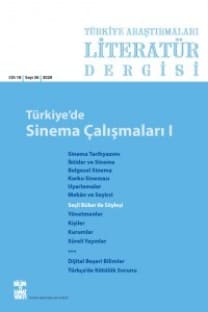Osmanlı'da Tercüme Kavramı ve Tanzimat Dönemindeki Edebî Tercümelere Dair Çalışmalar
Bu yazı, Tanzimat'tan başlayarak XX. yüzyılın başlarına kadar Osmanlıcaya yapılan edebi tercümeler üzerine yapılmış akademik çalışmaları inceleyip değerlendirme iddiasını taşımaktadır. Bunu yapabilmenin yollarından birisi, hem Tanzimat'tan önce tercüme kavramının nasıl bir hikayesi olduğuna bakmak, hem de ?edebi' tercüme olgusunu sadece başat edebi türlere hapsetmeden, edebi tercümelerin etrafında nasıl bir tercüme kültürünün oluştuğunu gösteren ve inceleyen eserleri de dikkate almaktan geçmektedir. Bu noktada, Osmanlı İmparatorluğu'ndaki tercümeleri listelemenin ve kimin neyi çevirdiği sorusunun ötesine geçerek, araştırmalarının sorunsalını yeni gelişmekte olan çeviribilim araştırmalarından alan ve bu sorunsalı tarihsel malzemeye uygulayarak Osmanlı'daki tercüme olgusunu derinlemesine anlamaya çalışan eserlere daha net vurgu yapılmıştır. Bu tip yeni çalışmalar sayesinde, Osmanlı'dan Cumhuriyet'e geçiş esnasında en azından ?tercüme anlayışları ve yöntemleri' açısından net bir kopukluktan ziyade, değişimi içerisinde barındıran bir bütünlük ve sürekliliğin olduğu anlaşılmıştır. XIX. yüzyılın ikinci yarısında yoğunlaşan ve Batı edebiyatından yapılan edebi tercümeler ve bu türlerin oluşumunu anlatan eserler de yine içinde bulundukları kültürel ve sosyal bağlamları dikkate alan eserler değerlendirilerek incelenmiştir. Ayrıca edebi türlerin oluşumunda imparatorluk içerisinde bulunan ve Türk dilini farklı alfabelerle yazan unsurların Türkçeye farklı alfabelerde yaptıkları tercümelerin katkıları da değerlendirilmiştir.
Anahtar Kelimeler:
Osmanlı İmparatorluğu, Osmanlıca Edebi Tercümeler, Çeviribilim, Yeni Edebi Türler, Çeviri Tarihi
The Works on the Ottoman Concept of Translation and on the Literary Translations during the Tanzimat Period
This article tries to analyze academic studies on the Ottoman translations from the Tanzimat period to the beginning of the 20th century. In order to achieve this, the author looks at the ‘story’ of the concept of ‘translation’ in the Ottoman culture before the Tanzimat period. Furthermore, the term literary translation should not only be considered with its literary meanings and limited to the main literary genres, but also studies showing the translation culture around the literary translation should be taken into consideration. Thus, some recent works using the methodologies of the newly emerging field of translation studies and applying these new methodolgies to the historical data in order to understand the phenomenon of Ottoman translation intensively are emphasized due to the fact that those studies aim to go beyond the questions of what are the title of translations and who are the translators. These studies displayed the very fact that a certain continuity and integrity took place between the Ottoman and Republican period instead of a clear discontinuity at least in the ‘conceptualization of translation and its methodologies”. The beginning of literary translation from the Western literatures into the Ottoman language in the second half of the 19th century is taken into consideration with a particular stress on the studies showing the emergence of new genres in their cultural and social contexts. The contributions of different ethnic and language groups, who are speaking Turkish but expressing themselves literally in different alphabets such as Greek or Armenian, to the emergence and constitution of new literary genres in the Ottoman literature are also assessed on the basis of their translations into Turkish in their own alphabets.
Keywords:
Ottoman Empire, Ottoman Literary Translations, Translation Studies, New Literary Genres, History of Translation,
- ISSN: 1303-9369
- Başlangıç: 2003
- Yayıncı: Bilim ve Sanat Vakfı
Sayıdaki Diğer Makaleler
Osmanlı'da Tercüme Kavramı ve Tanzimat Dönemindeki Edebî Tercümelere Dair Çalışmalar
II. Meşrutiyet'ten Cumhuriyet'e Türk Romanında Yeni Açılımlar
Adnan Benk ve Türk Edebiyat Eleştirisi
Türk Edebiyatında Roman: Cumhuriyet Devri
Türkiye'de Edebiyat Sosyolojisi Çalışmaları
Abdülhalim Memduh'tan Ahmet Hamdi Tanpınar'a Edebiyat Tarihlerinde Yenileşmenin Sınırları
